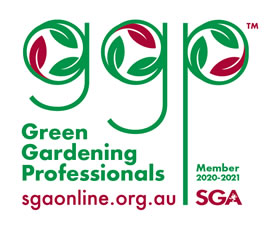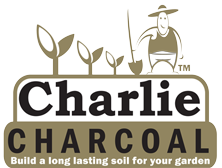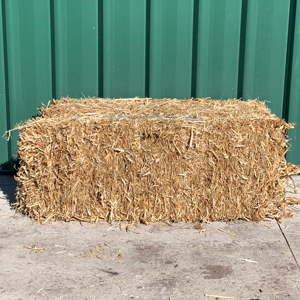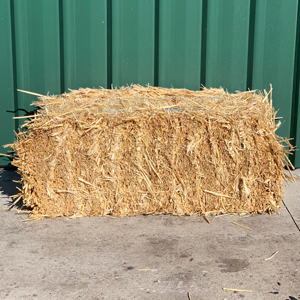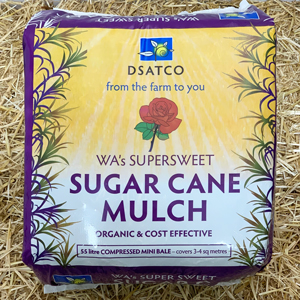| item(s), Total: $0.00 View Cart |
| Shopping cart is empty. |
Mulch your Veggie Patch

As the weather is warming up, you really should be thinking about mulching your Perth summer garden.
Vegie gardens are a little bit special. Of course, you can use any kind of mulch on your vegie patch; but we would normally recommend straw mulch (of some kind) as the most ‘user friendly’ and useful type.
Straw (a close up of wheaten straw is shown here) is lightweight, easy to use, and while it will certainly last over summer, it will break down within months (rather than years) which provides valuable organic material to the soil. Generally, once your crop has matured and it is time to replenish the bed, any remaining straw can simply be dug into the soil with compost and or manures, etc. and left to continue breaking down.
Straw is mostly light in colour too, which helps to reflect the heat rather than absorbing it into the soil. The structure of straw means it doesn’t tend to clump, allowing water to easily flow between the particles to reach the soil below.
There are several types of straw mulches available. Of these, we sell wheaten straw and pea straw, and bagged lupin mulch, sugar cane and bagged pea straw (when available).
Lupin mulch (made from shredded lupins, with a small amount of added chicken manure – this is bagged, and partially composted; largely due to the plastic packaging making the product ‘sweat’.) It's a rich mulch so will add nutrients as it decomposes.
Lucerne straw is commonly used for animal feed due to its high protein content. GLSC does stock Lucerne at certain times of the year; but availability fluctuates. It is the most expensive straw mulch we carry - when we can get it.
Sugar cane mulch grown & produced in WA is now available. We carry this in 50L bags, so it's clean and convenient to carry in your car. Sugar cane mulch is shredded, so it's fine, light in colour, has no smell and is nice to use in pots.
Our straw and pea straw is grown locally from an area around York. It is commercially grown, and thus is not Certified Organic. It is sprayed for weeds at a pre-emergent and early stage, to help prevent weed contamination in the bales (which could otherwise be spread to your garden).
Bagged pea straw (50L bags) is a convenient way to go - the bags are popular as they don't leave a mess in people's cars! However, supply is a bit irregular for this product - check with us and you may be lucky!
Certified Organic straw is unfortunately difficult to source, as many organic producers keep the product to use on their own properties and keep it “in the loop”. When we have found it to be available, it is being sold in large round rolls – also not a viable option for us to handle or sell (unfortunately you’ll never fit one in the back of a station wagon!)
Straw is the lower portion of the plant, after the head has been harvested. Unfortunately you will always have some seed in the remaining straw; it can never be completely seed free, or guaranteed completely weed free.
So Which Straw is “The Best?”
I get asked this question a lot – and it is a difficult one to answer. It comes down to personal preference.
Wheaten, oaten or barley straw is cheaper than pea straw, and receives one less spray in the growth cycle. This straw is straighter and more stick-like than pea straw, which can make it more difficult to fit around very small or tightly planted seedlings. It looks lovely and 'clean' around your green plants - if that is a consideration.
 Pea straw (shown here) is more chopped up, and softer to handle. It is easier to fit handfuls in around small seedlings. Peas are a nitrogen fixing plant, so as the pea straw breaks down, it does return a little more of this nitrogen to the soil – making it ‘richer’. This is not a huge amount of nitrogen we are talking about, and if you are already feeding your garden with blood & bone, or manure, the benefit of nitrogen from pea straw would be negligible. I have also noticed that slaters seem to prefer pea straw – I have no idea why, but this may be something to take into account if you are mulching around young, vulnerable seedlings. I use diatomaceous earth around seedlings for protection.
Pea straw (shown here) is more chopped up, and softer to handle. It is easier to fit handfuls in around small seedlings. Peas are a nitrogen fixing plant, so as the pea straw breaks down, it does return a little more of this nitrogen to the soil – making it ‘richer’. This is not a huge amount of nitrogen we are talking about, and if you are already feeding your garden with blood & bone, or manure, the benefit of nitrogen from pea straw would be negligible. I have also noticed that slaters seem to prefer pea straw – I have no idea why, but this may be something to take into account if you are mulching around young, vulnerable seedlings. I use diatomaceous earth around seedlings for protection.
Whichever straw you use, it will be doing a great job in helping retain moisture in the soil.
People often ask "how much will a straw bale cover?" - the answer depends (of course) on how thickly you use it. I usually say between 2-5m2.
Some General Rules for Mulching
Always water your soil well BEFORE putting down mulch.
Mulch on your vegie garden is best applied in late spring while the ground is still reasonably moist and cool, and before the hot, drying winds of summer are upon us. It is always a bit of a judgement call - depending on the stage of your seedlings, and weather conditions. Each backyard and microclimate is unique, so you will need to make a decision for yourself. As a rule, if plants are looking stressed - it's time to mulch. If soil dries out every day to at least a centimetre's depth I'd also say it's time.
If you are mulching over weeds, a layer of wet newspaper (at least 10 sheets thick) forms a great barrier. Soak the newspaper in a wheel barrow or similar before laying it in overlapping sections on the ground, then apply your mulch straight on top. Should you need to plant into it, simply puncture the layer of paper and plant away!
Products for Mulching your Veggie Patch
There are several products from our product range that are perfect for mulching your veggie patch in Perth. If you need help or advice to choose what’s best for you – please contact us today!
Get Growing Today!
Come on in!
Pick up bags or bulk product bring your trailer (or use one of ours) Opening hours: 8.30 - 4.00 Monday - Saturday (closed Sunday)
Shop Online - We Deliver
24/7 convenient & secure online shopping or support your local independent retail outlet
Get Growing
We guarantee our products. Ask our friendly staff for help & advice ~ we're here to help you achieve the garden of your dreams.



